Hyundai Tucson vs Toyota C-HR – Erot ja hinnat vertailussa
Molemmilla malleilla on vahvuutensa – mutta kumpi sopii sinulle paremmin?
Vertaa suorituskykyä, kulutusta, hintaa ja tiloja suoraan: Hyundai Tucson vai Toyota C-HR?
When it comes to compact SUVs, the Hyundai Tucson and Toyota C-HR have carved out impressive niches in a competitive segment. With distinct styling, cutting-edge technology, and a variety of powertrains, these two models present a compelling case for buyers. In this comparison, we will explore the technical aspects, innovations, and overall performance of both vehicles.
Design and Dimensions
The Hyundai Tucson exudes a bold and modern aesthetic, with its aggressive front grille and sculpted body lines. Measuring 4,510 mm in length, 1,865 mm in width, and 1,650 mm in height, it offers a substantial presence on the road. In contrast, the Toyota C-HR is slightly smaller, at 4,362 mm long, 1,832 mm wide, and 1,558 mm tall. The C-HR's distinctive coupe-like silhouette and unique rear styling set it apart from the Tucson, making it a stylish choice for urban dwellers.
Powertrain Options
The Tucson offers a more extensive range of engine types compared to the C-HR. It is available with diesel MHEV (Mild Hybrid), petrol MHEV, full hybrid, and plug-in hybrid powertrains. Engine options range from 136 HP to a powerful 252 HP, allowing for varied driving preferences.
On the other hand, the Toyota C-HR predominantly excels in hybrid technology. It features a full hybrid and a plug-in hybrid system, with power outputs reaching up to 223 HP. While both vehicles are available with front-wheel drive and all-wheel drive options, the Tucson stands out with its diverse powertrain offerings.
Fuel Efficiency and Performance
In terms of fuel consumption, the Tucson offers a range between 5.1 L/100km to as low as 1.0 L/100km for the plug-in hybrid variant. The C-HR shines with impressive fuel economy as well, achieving consumption figures as low as 4.7 L/100km. For the eco-conscious driver, both models offer clean options, with CO2 emissions for the Tucson ranging from 126 g/km to 153 g/km, while the C-HR's figures are even lower, at between 17 g/km and 115 g/km.
Acceleration times are competitive, with the Tucson achieving 0-100 km/h in as little as 7.9 seconds, while the C-HR offers a similar performance with a best time of 7.4 seconds for the more powerful variants.
Interior and Technology
Both the Tucson and C-HR prioritize comfort and technology within their cabins. The Tucson boasts a spacious trunk capacity ranging from 546 L to 620 L, making it a practical choice for families or those requiring extra cargo space. In comparison, the C-HR has a smaller trunk capacity, with the maximum rated at 447 L.
On the technology front, the Tucson features advanced infotainment options, including a large touchscreen display and driver-assistance technologies. The C-HR is equipped with Toyota's latest multimedia systems, providing intuitive interfaces alongside essential safety features.
Driving Dynamics
Behind the wheel, the Tucson delivers a confident driving experience thanks to its variety of chassis settings and available all-wheel-drive configuration. Coupled with its range of engine choices, it encourages both spirited drives and comfortable commutes.
The C-HR, while slightly less powerful, focuses on agility and urban maneuverability, making it an ideal choice for city driving. Its tight turning radius and responsive steering enhance the overall driving experience.
Conclusion
Ultimately, choosing between the Hyundai Tucson and Toyota C-HR will depend on individual preferences and priorities. The Tucson appeals with its robust engine options, spacious interior, and advanced technology, while the C-HR leans heavily on its hybrid efficiency and eye-catching design.
Both vehicles offer unique qualities that cater to a wide range of buyers, making them leading contenders in the compact SUV market. Whether you prioritize space, power, or eco-friendliness, the Tucson and C-HR are worth considering in your next vehicle purchase.
Tässä mennään yksityiskohtiin: tekniset erot tarkemmin
Kustannukset ja kulutus: Hinnan ja tehokkuuden vertailussa erot tulevat usein selvimmin esiin. Tässä ratkaistaan, kumpi malli sopii paremmin budjettiisi pitkällä aikavälillä.
Toyota C-HR on hinnassa kevyt edullisempi – sen lähtöhinta on 34000 €, kun taas Hyundai Tucson maksaa 35700 €. Ero on noin 1750 €.
Polttoaineenkulutuksessa näkyy ero: Toyota C-HR kuluttaa 0.80 L ja on siten selvästi havaittava taloudellisempi kuin Hyundai Tucson, jonka kulutus on 1 L. Ero on noin 0.20 L /100 km.
Toimintamatkassa Hyundai Tucson suoriutuu melkein huomaamaton paremmin: se yltää jopa 70 km:een, noin 2 km enemmän kuin Toyota C-HR.
Moottori ja suorituskyky: Moottorin alta paljastuu, kumpi malli on urheilullisempi ja kiihtyy paremmin.
Moottoritehossa Hyundai Tucson on hieman etulyöntiasemassa – 252 hv verrattuna 223 hv:een. Ero on noin 29 hv hv.
Kiihdytyksessä 0–100 km/h Toyota C-HR on tuskin havaittava nopeampi – 7.40 s vs. 7.90 s. Ero on noin 0.50 s sekuntia.
Huippunopeudessa Hyundai Tucson on melkein huomaamaton edellä – se yltää 194 km/h:een, kun taas Toyota C-HR saavuttaa 180 km/h. Ero on noin 14 km/h.
Tila ja käytännöllisyys: Tehon ohella arjessa ratkaisevat mukavuus ja käytännöllisyys. Tässä selviää, kumpi auto on monipuolisempi ja tilavampi.
Molemmissa autoissa on tilaa 5 henkilölle.
Omapainossa Toyota C-HR on vähäinen kevyempi – 1505 kg verrattuna 1520 kg:een. Painoero on noin 15 kg.
Tavaratilan koossa Hyundai Tucson tarjoaa erottuva enemmän – 620 L verrattuna 447 L:een. Ero on noin 173 L.
Maksimikantavuudessa Hyundai Tucson pärjää erottuva paremmin – jopa 1799 L, noin 644 L enemmän kuin Toyota C-HR.
Kantavuudessa Hyundai Tucson on huomattava parempi – 545 kg verrattuna 425 kg:een. Ero on noin 120 kg.
Kokonaisuudessaan Hyundai Tucson on varmistaa voiton selkeällä erolla ja nappaa näin DriveDuel Champion -tittelin.
Se vakuuttaa tasapainoisemmalla kokonaisuudellaan ja on käytännöllisempi kumppani arjessa.
Hyundai Tucson
Hyundai Tucson on saanut paljon kiitosta tyylikkäästä muotoilustaan ja tilavasta sisätilastaan, joka tarjoaa mukavuutta perheille ja matkustajille. Sen modernit ominaisuudet ja älykäs teknologia tekevät ajamisesta vaivattomampaa ja turvallisempaa. Tucson yhdistää upeasti käytännöllisyyden ja tyylin, tehden siitä erinomaisen valinnan kaupunkiajoon ja pidemmille matkoille.
Tiedot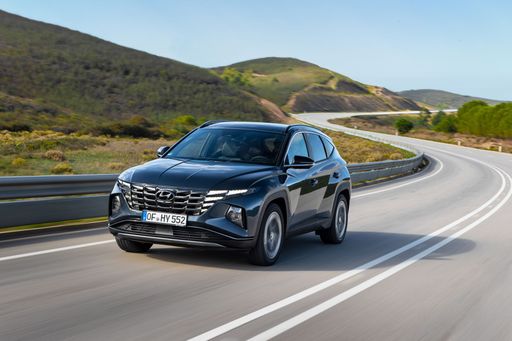 @ hyundai.news
@ hyundai.news
 @ hyundai.news
@ hyundai.news
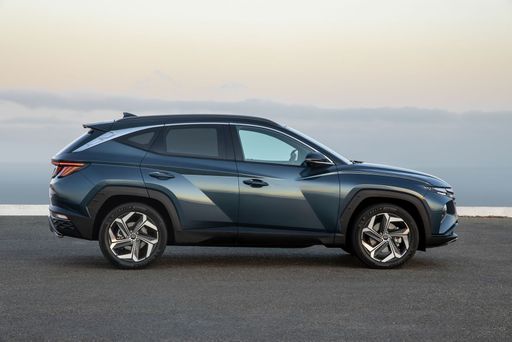 @ hyundai.news
@ hyundai.news
 @ hyundai.news
@ hyundai.news
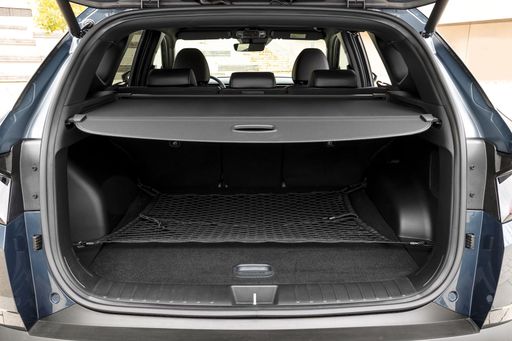 @ hyundai.news
@ hyundai.news
Toyota C-HR
Toyota C-HR on moderni ja tyylikäs crossover, joka erottuu massasta rohkealla muotoilullaan. Sen dynaaminen ajokäytös ja mukautuva sisustus tekevät siitä erinomaisen valinnan kaupunkiympäristöön sekä pidemmille matkoille. C-HR yhdistää ympäristöystävällisyyden ja ajonautinnon, mikä houkuttelee niin nuoria kuljettajia kuin perheellisiä asiakkaita.
Tiedot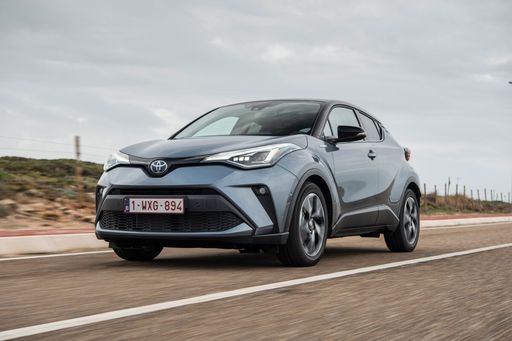 @ Toyota
@ Toyota
 @ Toyota
@ Toyota
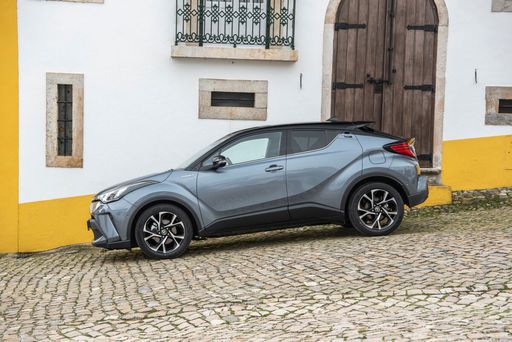 @ Toyota
@ Toyota
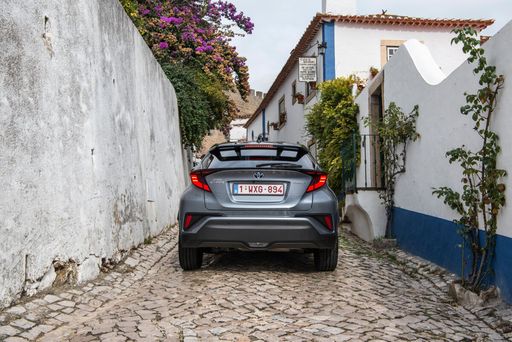 @ Toyota
@ Toyota
 @ Toyota
@ Toyota

|

|
|
|
|
Kustannukset ja kulutus |
|
|---|---|
|
Hinta
35700 - 54100 €
|
Hinta
34000 - 50000 €
|
|
Kulutus L/100km
1 - 6.9 L
|
Kulutus L/100km
0.8 - 5.1 L
|
|
Kulutus kWh/100km
-
|
Kulutus kWh/100km
-
|
|
Sähköinen toimintasäde
64 - 70 km
|
Sähköinen toimintasäde
68 km
|
|
Akun kapasiteetti
-
|
Akun kapasiteetti
-
|
|
CO2
22 - 156 g/km
|
CO2
17 - 115 g/km
|
|
Polttoainesäiliön tilavuus
42 - 54 L
|
Polttoainesäiliön tilavuus
43 L
|
Mitat ja kori |
|
|---|---|
|
Kori
SUV
|
Kori
SUV
|
|
Istuimet
5
|
Istuimet
5
|
|
Ovet
5
|
Ovet
5
|
|
Omamassa
1520 - 1889 kg
|
Omamassa
1505 - 1755 kg
|
|
Tavaratila
546 - 620 L
|
Tavaratila
350 - 447 L
|
|
Pituus
4510 - 4520 mm
|
Pituus
4362 mm
|
|
Leveys
1865 mm
|
Leveys
1832 mm
|
|
Korkeus
1650 mm
|
Korkeus
1558 - 1564 mm
|
|
Maksimi tavaratila
1721 - 1799 L
|
Maksimi tavaratila
1076 - 1155 L
|
|
Kantavuus
525 - 545 kg
|
Kantavuus
375 - 425 kg
|
Moottori ja suorituskyky |
|
|---|---|
|
Moottorityyppi
Diesel MHEV, Bensiini MHEV, Bensiini, Täyshybridi, Plug-in hybridi
|
Moottorityyppi
Täyshybridi, Plug-in hybridi
|
|
Vaihteisto
Automaatti, Manuel
|
Vaihteisto
Automaatti
|
|
Vaihteiston tyyppi
Kaksoiskytkin automaatti, Manuaalivaihteisto, Automaattivaihteisto
|
Vaihteiston tyyppi
CVT-vaihteisto
|
|
Vetotapa
Etuveto, Neliveto
|
Vetotapa
Etuveto, Neliveto
|
|
Teho hv
136 - 252 hv
|
Teho hv
140 - 223 hv
|
|
Kiihtyvyys 0-100 km/h
7.9 - 11.6 s
|
Kiihtyvyys 0-100 km/h
7.4 - 9.9 s
|
|
Huippunopeus
180 - 194 km/h
|
Huippunopeus
175 - 180 km/h
|
|
Vääntömomentti
265 - 367 Nm
|
Vääntömomentti
-
|
|
Sylinterien lukumäärä
4
|
Sylinterien lukumäärä
4
|
|
Teho kW
100 - 185 kW
|
Teho kW
103 - 164 kW
|
|
Iskutilavuus
1598 cm3
|
Iskutilavuus
1798 - 1987 cm3
|
Yleiset |
|
|---|---|
|
Mallivuosi
2024
|
Mallivuosi
2024 - 2025
|
|
CO2-tehokkuusluokka
E, F, D, B
|
CO2-tehokkuusluokka
C, B
|
|
Merkki
Hyundai
|
Merkki
Toyota
|
Millaisia voimalinjoja Hyundai Tucson:ssa on saatavilla?
Saatavilla olevat vaihtoehdot: Etuveto tai Neliveto.
Näytetyt hinnat ja tiedot ovat arvioita, jotka perustuvat Saksan listahintoihin, ja voivat vaihdella maittain. Nämä tiedot eivät ole oikeudellisesti sitovia.
